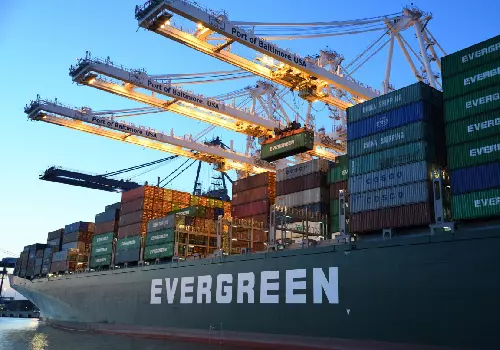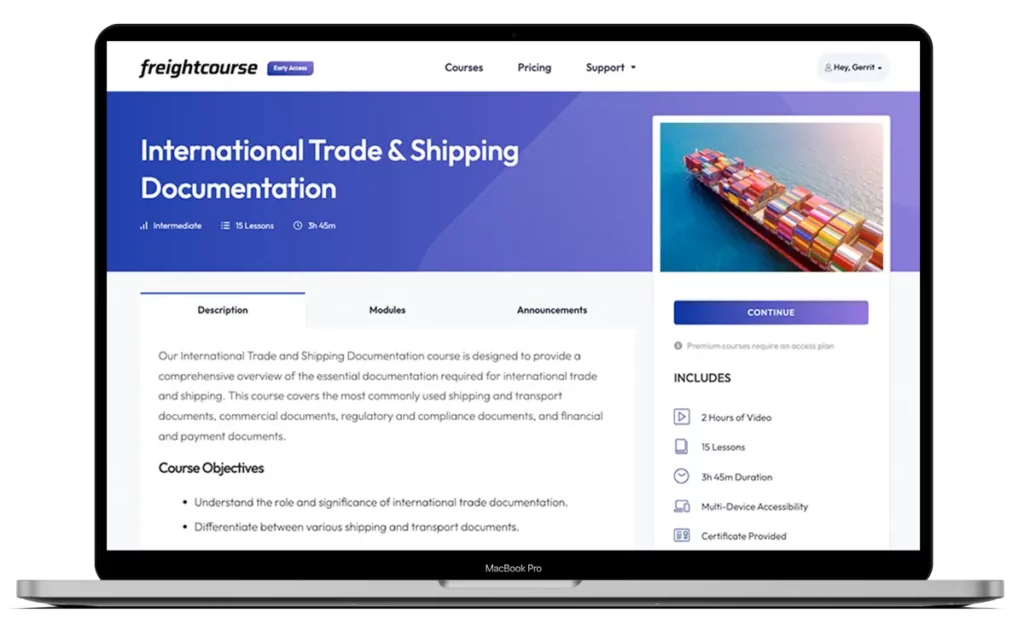The majority of logistics, shipping, and freight companies measure market share or business size in the number of twenty-foot-equivalent units (TEUs) or containers handled over a certain period of time. However, for certain types of freight businesses or business segments, Freight Under Management is used.
Freight Under Management (FUM) is a measure of the total dollar value of freight managed by 3PL & 4PL service providers on behalf of their customers. Services that are considered Freight Under Management are typically freight, inventory, or supply chain related activities.
Companies that utilize FUM are typically third-party logistics (3PL) and fourth-party logistics (4PL), as well as transport management system (TMS) providers.
In this guide, we’ll be exploring the concept of Freight Under Management (FUM), how it’s calculated, what activities qualify, and what type of companies use this as a measurement of market share or business size.
What Activities Constitute As Freight Under Management?
The activities counted toward Freight Under Management are generally freight, logistic and supply chain related. These typically include any transportation, inventory, or shipment-related activities for a particular customer.
When a third-party logistics (3PL) or fourth-party logistics (4PL) provider manages a combination of activities listed below for their customers, they are managing parts of their supply chain.



Take note that not all supply chains may include all of these activities and it’s mostly a combination of a few. Let’s explore them in more detail.
1. Freight Management
All freight spend including sea freight, air freight, road freight – including pre-carriage and on-carriage – rail freight, and even multimodal transport is counted as Freight Under Management.
Transport costs typically make up the largest portion of the overall freight spend. Freight management service providers (3PLs and 4PLs) book and coordinate shipments through direct engagement with a customer’s vendor.
Below is a non-exhaustive list of transport modes that are generally counted as Freight Under Management:
- Sea freight
- Air freight
- Road freight
- Rail freight
2. Inventory Management
It’s also common to count any type of inventory management costs, as well as any costs associated with storage into Freight Under Management. Tech and software companies who provide order management or transport management systems generally include this in their FUM Calculations.
On the other hand, 3PL and 4PL service providers may occasionally count inventory or storage-related costs as FUM if they are associated with the shipments they are managing.
Here’s a list of several storage and warehousing activities that are generally considered. These are just a few among various others:
- Storage Costs
- Inventory management
- Distribution
- Packing
- Quality Checking
- Value added services
3. Supply Chain Management
When it comes to offering supply chain management-related services, third-party and fourth-party logistics providers include this type of spend in their Freight Under Management calculations.
These services can range from shipping documentation to carrier allocation management. Let’s take a look at a few other examples:
- Documentation
- Allocation management
- Order management
- Shipment Planning
- Freight Payment
- Invoice Auditing
How To Calculate Freight Under Management?
There are various ways that companies use to measure Freight Under Management. The most common way, which also happens to be the industry standard, is to calculate the total dollar value of freight managed.
In other words, the calculation consists of the freight costs, their associated warehousing or storage costs, as well as all other types of supply chain or related services.
To further illustrate this, let’s take a look at an example below, where you will see all of the costs broken down. In this example, a 4PL service provider is offering freight management services that include freight audit, haulage management, and warehousing activities.
| Service | Description | Yearly Fee |
| 1. Freight Management Services | Booking, documentation, and coordination of all sea and air freight shipments | USD 780,000 |
| 2. Freight Audit | Checking and validation of carrier invoices | USD 65,000 |
| 3. Haulage Management | Pre-carriage and on-carriage management with appointed haulage providers | USD 35,000 |
| 4. Warehouse Storage | Warehouse storage at origin and destination before cargo is distributed | USD 370,000 |
| Total | USD 1,250,000 |
In the example calculation above, you can see that this 4PL has USD 1,250,000 of Freight Under Management for this particular customer. The total FUM of a 4PL is the sum of all freight managed by all of their customers.
What Type of Companies Use Freight Under Management?
3PL & 4PL service providers and Transport Management System (TMS) service providers typically use Freight Under Management as a measure to gauge market share and evaluate the size of a business.
3PL & 4PL Service Providers
Freight Under Management has an important application for most 3PL and 4PL service providers as it measures the total freight managed on behalf of their customers.
FUM is a common way of tracking the overall value of a business, as containers, TEUs, tons, cubic meters (cbm) are merely units of measurement and don’t provide much insight into the size of the business that is handled.
Oftentimes 3PLs and 4PLs don’t own the freight or service contracts, and instead only manage their customer’s supply chain. This makes FUM a more appropriate way to measure account size and market share.
Here are some of the most popular 3PL and 4PL service providers that offer freight management and supply chain services:
- DHL Supply Chain
- Kuehne + Nagel
- DB Schenker
- DSV
- XPO Logistics
- Expeditors
- GEODIS
- CEVA Logistics
- Maersk Logistics
- Bolloré Logistics
Order & Transport Management System Providers
Technology companies that specialize in offering supply chain tools such as order management systems and transport management systems also use Freight Under Management to assess the size of a business and calculate market share.
It also helps these system providers to assess how profitable a business could be and lets them know how much their customers are spending on their supply chain activities. In turn, this helps them price services and products more accurately.
Here are some of the most popular order and transport management system providers on the market:
- SAP
- Infor
- Oracle
- Logility
- E2open
- MercuryGate
- Kuebix
Closing Remarks
As outlined in this article, companies that offer freight management services or transport management systems measure market share and business size by using Freight Under Management.
However, take note that this does not mean that they don’t use other types of measurements such as containers, TEUs, tons, and shipments, amongst various others.

Get Free Course Access
If you enjoyed the article, don’t miss out on our free supply chain courses that help you stay ahead in your industry.

Gerrit Poel
Co-Founder & Writer
at freightcourse
About the Author
Gerrit is a certified international supply chain management professional with 16 years of industry experience, having worked for one of the largest global freight forwarders.
As the co-founder of freightcourse, he’s committed to his passion for serving as a source of education and information on various supply chain topics.
Follow us